




Introduction to Cost Price Formula
The cost price formula, which is also known as CP, is used to determine an item's actual price. In other words, it is the cost of any commodity that we buy. Through the selling price, the cost price aids in determining profitability.
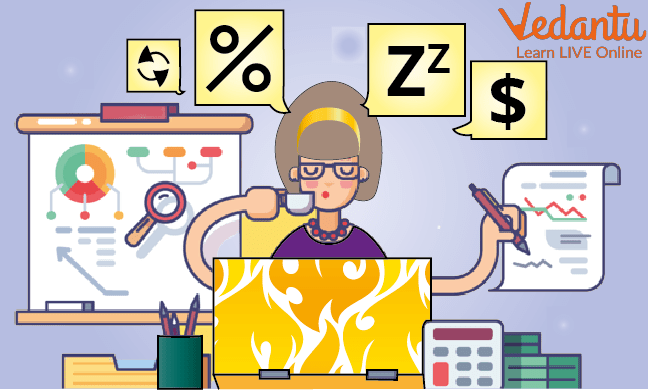
Cost Price Formula
As a result, you make a profit if the original value is less than the selling price, and you lose money if the original value is higher than the selling price. In order to better understand this, we will discuss two cost price formulas in this section, understand the variables at play, and work through a few examples.
Definition of Cost Price:

Person Buying Books
The cost price is the sum of money used to produce goods or services before any profit is added for the manufacturer or producer. Other names for it include last cost, average cost, and actual cost.
The extra costs associated with production, real estate, materials, electricity, R&D, testing, worker wages, and other expenses are all included in the cost price. The cost price and the selling price of any item are always used to determine profit and loss.
Cost Price and Selling Price:
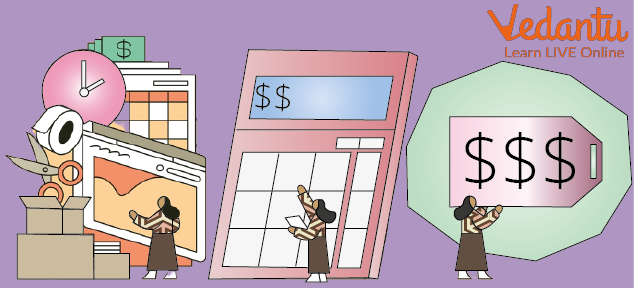
Cost Price and Selling Price
Cost Price: The cost price of an item is the sum paid to obtain it or the cost at which it was produced. The cost price is denoted by the letter C.P.
Selling Price: The selling price is the cost at which an item is offered for sale. The selling price is denoted by the letter S.P.
How Do You Evaluate Cost Price?

Evaluating Cost Price
By comparing the profit to the selling price, the CP is used to confirm the profit. This implies that there is a profit in the purchase if the original value, which is the C.P., is lower than the selling price. Additionally, the purchase will result in a loss if the C.P. is higher than the S.P.
What is the Cost Price Formula?
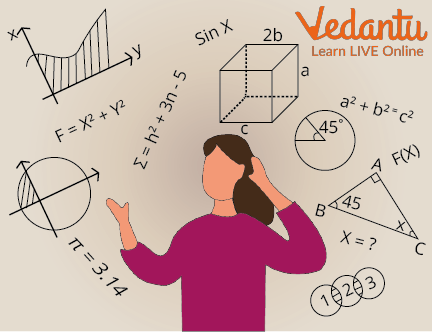
Formulas
Let’s learn the cost price formula in math from the following-
To determine whether we made money when we sold a product, we used the formula below.
The Formula for Cost Price (CP) : Selling Price (SP) - Profit
We use the following formula if we lose money while selling a product.
The Formula for Cost Price (CP) : Selling Price (SP) + Loss
The following is the formula for profit (gain) percentage and selling price
The Formula for Cost Price(CP) : {100/(100 + Profit %)} x SP.
The equation based on loss percentage and SP is as follows
The Formula for Cost Price(CP) : {100/(100 - Loss %)} x SP
Solved Examples:
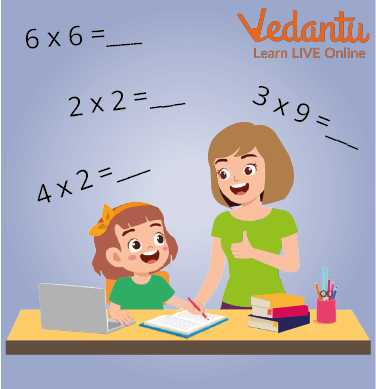
Learning From Examples
1. On selling a chair for Rs500, James loses 6%. For how much did she purchase it? Calculate the cost price by using the formula.
Ans: Given, Loss = 6%; SP = Rs 500; CP = ?
If the loss is 6%, it means that if the cost price is Rs100, the loss incurred is Rs6.
If CP is Rs. 100, then SP is Rs. 94
When SP is Rs. 94, CP = Rs. 100
When SP is Rs. 500
CP = (100/94) × 500 = Rs531.90
∴ CP = Rs. 531.90
Therefore, the cost price of the chair is Rs. 531.90
2. If by selling a particular test series at Rs. 300 a website earns a profit of Rs. 46. then determine the CP of the test series.
Ans: Here is the selling price of the test series=Rs. 330 and profit = Rs. 46
Using the formula, we get:
CP = Selling Price - Profit
= 300-46
CP of the test series = Rs.254
Let’s Practise:
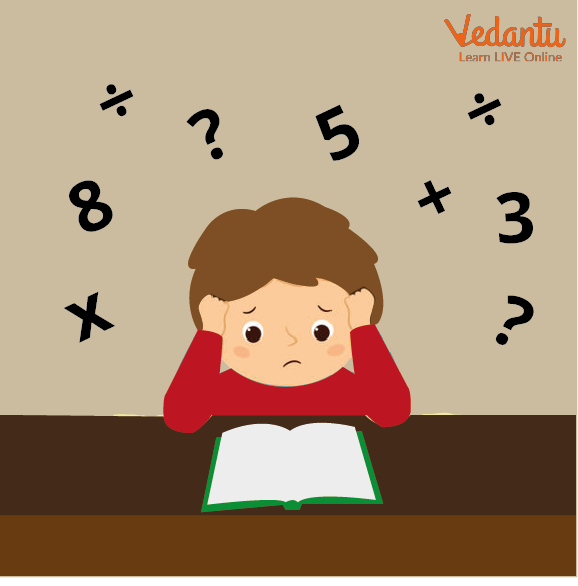
Practice Time
The selling price of a toy is Rs. 340 and the profit earned by the shopkeeper is Rs. 60. Find the cost price of the toy using the cost price formula.
Ans: Rs. 280
An article was sold for Rs. 230 at a loss of Rs. 20. Using the cost price formula can you calculate what was its cost price?
Ans: Rs. 250
Summary
The original cost of making a product, along with some additional costs incurred during the manufacturing process, is the cost price of the product. Calculating the actual profit of the product, its manufacturer, and its developer is helped by differences between the selling price and cost price of the products.
FAQs on Cost Price Formula - Learning Formulas with Fun
1. What is the cost price formula, and how is it applied to solve exam questions in mathematics?
The cost price formula in maths is used to determine the original price of an item before profit or loss. Commonly used formulas include:
- Cost Price (CP) = Selling Price (SP) - Profit
- CP = Selling Price (SP) + Loss
- If percentage profit or loss is given:
CP = [100 / (100 + Profit%)] × SP
CP = [100 / (100 - Loss%)] × SP
2. How do you differentiate between cost price and selling price with suitable examples for CBSE board exams?
Cost Price (CP) is the amount paid to acquire or produce an item. Selling Price (SP) is the price at which the item is sold to a buyer. For example, if a shopkeeper buys a book for Rs. 100 (CP) and sells it at Rs. 120 (SP), he gains a profit of Rs. 20. Clear understanding of these terms helps answer profit and loss problems effectively in board exams.
3. Why is understanding the cost price formula important for scoring well in CBSE 2025-26 Maths exams?
Knowing the cost price formula allows students to quickly solve profit and loss questions, which are frequently asked in the CBSE Maths syllabus. Mastery over such formulas boosts speed and accuracy, helping achieve higher marks in both short and long answer sections.
4. If a student mistakenly uses profit instead of loss in the cost price formula, what error occurs in the answer?
Substituting profit when the question actually refers to a loss will give a completely inaccurate cost price value. This common conceptual mistake leads to a mathematically incorrect result and can cost marks in CBSE exams. Always check whether the transaction resulted in profit or loss before applying the formula.
5. How can you approach HOTS (Higher Order Thinking Skills) questions involving cost price calculations in board papers?
For HOTS questions,
- Break down the question to identify all given values (SP, profit/loss, percentage, etc.).
- Apply the appropriate formula step by step, showing all workings.
- Be careful with percentage conversions.
- Check if there are hidden costs or combined transactions.
6. In CBSE board exams, what variants of cost price formula questions might be expected?
Exam questions may ask you to:
- Calculate CP given SP and profit/loss
- Find SP when CP and profit/loss are known
- Deal with percentage profit or loss
- Solve problems with mixed transactions—some in profit, others in loss
7. How does understanding the relationship between cost price and selling price help in real life as per CBSE learning outcomes?
Understanding the link between cost price and selling price is useful beyond exams. It helps in budgeting, entrepreneurship, and purchasing, as you can analyze when you are making a profit or incurring a loss. This aligns with CBSE's focus on real-world applicability in the 2025-26 syllabus.
8. What are the common exam traps in cost price formula questions, and how can you avoid them in board exams?
Common traps include confusing CP with SP, ignoring whether the problem is about profit or loss, and misreading percentage values. To avoid mistakes:
- Underline given amounts and labels in the question
- Write out the formula explicitly before substituting values
- Double-check if you are adding or subtracting profit/loss as per the question context
9. When solving combined profit and loss questions, how should you structure your answer for full marks in CBSE Maths?
When a question involves multiple items with both profits and losses:
- Treat each transaction separately.
- Calculate CP or SP for each using the correct formula.
- Sum up totals at the end to get the overall result.
10. How can understanding the cost price formula help with time management during CBSE board Maths exams?
Because cost price formula questions can be solved quickly when the method is memorized, this frees up time for more complex problems later in the exam. Effective time management is key to attempting all sections and maximizing your board marks in the 2025-26 exams.











